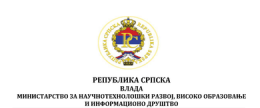KEY GAME-RELATED STATISTICAL PARAMETERS PREDICTING PERFORMANCE INDEX RATING FOR U16, U18, AND U20 BASKETBALL PLAYERS IN DIFFERENT PLAYING POSITIONS
Volume 15, Issue V (2025)
Volume 15, Issue V (2025)
KEY GAME-RELATED STATISTICAL PARAMETERS PREDICTING PERFORMANCE INDEX RATING FOR U16, U18, AND U20 BASKETBALL PLAYERS IN DIFFERENT PLAYING POSITIONS
Abstract:
The aim of this study was to determine which game-related statistical parameters could be used to predict the performance index rating of U16, U18, and U20 basketball players in different playing positions. A total of 167 games (box scores for 1813 players) of the finalists teams were analyzed at the FIBA Youth European Championships for men held from 2017-2022 across age categories: U16 (55 games, 595 players), U18 (56 games, 618 players) and U20 (56 games, 600 players). The game-related statistical parameters gathered as independent variables included: total points scored, free throw, 2 and 3-points attempts and made, rebounds, assists, steals, turnovers, personal fouls and blocks. The dependent variable was the Performance Index Rating. The basic descriptive statistics were calculated, while the models of depen- dency among the observed variables were defined using multiple regression analysis (backward method) at the significance level of p ≤ 0.05. For players in outside positions, total points scored, assists, steals and offensive and defensive rebounds have a positive impact on their performance index rating. A number of 2-point and free throw attempts, turnovers, 3-point attempts, blocks against and personal fouls committed, have a negative impact. For players in inside positions, positive impact have a number of made 2 and 3-point shots, as well as assists, steals, defensive rebounds and blocks in favour. The negative impact included a 2-point shot attempts, turnovers, and personal fouls committed. These results can help coaches design more effective training programs, to prioritize offensive and defensive skills that positively impact a player’s per- formance.
Keywords:
basketball, quantitative indicators, national teams, youth, preformance analyses.
Full Text:
References:
Arrieta, H., Torres-Unda, J., Gil, S., & Irazusta, J. (2015). Relative age effect and performance in the U16, U18 and U20 european basketball championships. Journal of Sports Sciences, 34(16), 1530-1534. https://doi.org/10.1080/02640414.2015.1122204
Bae, J. Y. (2022). Positional differences in physique, physical strength, and lower extremity stability in korean male elite high school basketball athletes. International Journal of Environmental Research and Public Health, 19(6), 3416. https://doi.org/10.3390/ijerph19063416
Brown, F. S., Fields, J. B., Jagim, A. R., Baker, R. E., & Jones, M. T. (2023). Analysis of in-season external load and sport performance in women’s collegiate basketball. Journal of Strength and Conditioning Research, 38(2), 318-324. https://doi.org/10.1519/jsc.0000000000004636 Cabarkapa, D. (2024). Game-related statistics that discriminate winning from losing in ncaa division-i men’s basketball. Frontiers in Sports
and Active Living, 6. https://doi.org/10.3389/fspor.2024.1387918
Canli, U., Taşkin, C., & Yuksel, U. (2021). Exploring of changes of anthropometric structures and athletic performances of 8-13 year-old male basketball players. European Journal of Public Health Studies, 4(2). https://doi.org/10.46827/ejphs.v4i2.104
Canuto, S. &Almeida, M. (2022). Determinants of basketball match outcome based on game-related statistics: a systematic review and meta- analysis. European Journal of Human Movement, 48, 4-20. https://doi.org/10.21134/eurjhm.2022.48.2
Carvalho, H., Coelho‐e‐Silva, M., Eisenmann, J., & Malina, R. (2013). Aerobic fitness, maturation, and training experience in youth basketball.
International Journal of Sports Physiology and Performance, 8(4), 428-434. https://doi.org/10.1123/ijspp.8.4.428
Carvalho, E. M. O. d., Leicht, A. S., Nakamura, F. Y., Okuno, N. M., & Okazaki, V. H. A. (2017). Team statistical determinants of victory in brazilian basketball. MOJ Sports Medicine, 1(4). https://doi.org/10.15406/mojsm.2017.01.00018
Carvalho, H., Leonardi, T., Soares, A., Paes, R., Foster, C., & Gonçalves, C. (2019). Longitudinal changes of functional capacities among adolescent female basketball players. Frontiers in Physiology, 10. https://doi.org/10.3389/fphys.2019.00339
Choi, D. H., Kim, S. M., Lee, J., Suh, S. H., & So, W. (2015). Winning factors: how players’ positional offensive and defensive skills affect probability of victory in the korea basketball league. International Journal of Sports Science &Amp; Coaching, 10(2-3), 453-459. https://doi.org/10.1260/1747-9541.10.2-3.453
Ektirici, A. (2023). Game-related statistics discriminating winners and losers in turkish basketball super league: effect of home-away games.
Spor Bilimleri Araştırmaları Dergisi, 8(2), 148-156. https://doi.org/10.25307/jssr.1233412
Erčulj, F., Vidic, M., & Leskošek, B. (2019). Shooting efficiency and structure of shooting in 3 × 3 basketball compared to 5v5 basketball.
International Journal of Sports Science &Amp; Coaching, 15(1), 91-98. https://doi.org/10.1177/1747954119887722
García-Gil, M., Torres-Unda, J., Esain, I., Duñabeitia, I., Gil, S., Gil, J. & Irazusta, J. (2018). Anthropometric parameters, age, and agility as performance predictors in elite female basketball players. The Journal of Strength and Conditioning Research, 32(6), 1723-1730. https://doi.org/10.1519/jsc.0000000000002043
García, F., Fernández, D., & Martin, L. (2022). Relationship between game load and player’s performance in professional basketball. Interna- tional Journal of Sports Physiology and Performance, 17(10), 1473-1479. https://doi.org/10.1123/ijspp.2021-0511
Gómez, M. Á., Lorenzo, A., Godoy, S. J. I., Ortega, E., Leite, N., & Sampaio, J. (2010). An analysis of defensive strategies used by home and away basketball teams. Perceptual and Motor Skills, 110(1), 159-166. https://doi.org/10.2466/pms.110.1.159-166
Gómez, M. & Ibáñez, S. (2017). The use of classification and regression tree when classifying winning and losing basketball teams. Kinesiol- ogy, 49(1), 47. https://doi.org/10.26582/k.49.1.9
Gómez, M., Medina, R. S., Leicht, A. S., Zhang, S., & Vaquera, A. (2020). The performance evolution of match play styles in the spanish pro- fessional basketball league. Applied Sciences, 10(20), 7056. https://doi.org/10.3390/app10207056
Ibáñez, S., Mazo, A., Nascimento, J., & García-Rubio, J. (2018). The relative age effect in under-18 basketball: effects on performance accord- ing to playing position. Plos One, 13(7), e0200408. https://doi.org/10.1371/journal.pone.0200408
Joseph, J. R., McIntyre, F., Joyce, C., Scanlan, A. T., & Cripps, A. (2021). A comparison of multidimensional qualities discriminant of selection in elite adolescent australian basketball athletes. Plos One, 16(8), e0256032. https://doi.org/10.1371/journal.pone.0256032
Madarame, H. (2018). Defensive rebounds discriminate winners from losers in european but not in asian women’s basketball championships.
Asian Journal of Sports Medicine, 9(1). https://doi.org/10.5812/asjsm.67428
Mikołajec, K., Maszczyk, A., & Zając, T. (2013). Game indicators determining sports performance in the nba. Journal of Human Kinetics, 37(1), 145-151. https://doi.org/10.2478/hukin-2013-0035
Mikić, M., Vučković, I., Karać, A., Belegišanin, B., Vukićević, V., & Stojanovic, M. (2018). Game-related statistics that discriminated winning and losing teams in nlb league. Facta Universitatis Series Physical Education and Sport, 477. https://doi.org/10.22190/ fupes180606042m
Milanović, L., Jukić, I., Dadić, M., Vučetić, V., & Šentija, D. (2019). Is there any difference in fitness profiles among the croatian basketball players?. Kinesiology, 51(2), 276-284. https://doi.org/10.26582/k.51.2.17
Pocius, E. & Malinauskas, R. (2023). Determining positive behavioral skills in different age groups of young basketball players during the pandemic. Children, 10(6), 914. https://doi.org/10.3390/children10060914
Pojskić, H., Separovic, V., Užičanin, E., Muratović, M., & Mačković, S. (2015). Positional role differences in the aerobic and anaerobic power of elite basketball players. Journal of Human Kinetics, 49(1), 219-227. https://doi.org/10.1515/hukin-2015-0124
Ramos, S., Volossovitch, A., Ferreira, A., Fragoso, I., & Massuça, L. (2021). Training experience and maturational, morphological, and fit- ness attributes as individual performance predictors in male and female under-14 portuguese elite basketball players. The Journal of Strength and Conditioning Research, 35(7), 2025-2032. https://doi.org/10.1519/jsc.0000000000003042
Raval, K. M. R. & Pagaduan, J. (2021). Factors that differentiate winning and losing in men’s university basketball. Montenegrin Journal of Sports Science and Medicine, 10(2), 13-17. https://doi.org/10.26773/mjssm.210902
Sansone, P., Gasperi, L., Tessitore, A., & Gómez, M. (2021). Training load, recovery and game performance in semiprofessional male bas- ketball: influence of individual characteristics and contextual factors. Biology of Sport, 38(2), 207-217. https://doi.org/10.5114/biol- sport.2020.98451
Simović, S., Komić, J., Matković, B., Pajić, Z., & Guzina, B. B. (2019). Analysis of influence of basketball game-related statistics on final result based on differences at the 2017 fiba asia cup. Asian Journal of Sports Medicine, 10(1):e69109. https://doi.org/10.5812/asjsm.69109
Simović, S., Komić, J., Guzina, B. B., Pajić, Z., Karalić, T., & Pašić, G. (2020). Difference-based analysis of the impact of observed game pa- rameters on the final score at the fiba eurobasket women 2019. Journal of Human Sport and Exercise, 16(2). https://doi.org/10.14198/ jhse.2021.162.12
Wang, F. & Zheng, G. (2022). Examining positional difference in basketball players’ field goal accuracy using bayesian hierarchical model.
International Journal of Sports Science &Amp; Coaching, 17(4), 848-859. https://doi.org/10.1177/17479541221096772 Wootten, M. (2013). Coaching basketball successfully - 3rd Edition. Human Kinetics, Champaign, IL
Zarić, I., Dopsaj, M., Marković, M., Zarić, M., Jakovljević, S., & Berić, D. (2020). Body composition characteristics measured by multichan- nel bioimpedance in young female basketball players: relation with match performance. International Journal of Morphology, 38(2), 328-335. https://doi.org/10.4067/s0717-95022020000200328
Zhai, Z., Guo, Y., Li, Y., Zhang, S., & Liu, H. (2020). The regional differences in game-play styles considering playing position in the fiba female continental basketball competitions. International Journal of Environmental Research and Public Health, 17(16), 5827. https:// doi.org/10.3390/ijerph17165827
Zhai, Z., Guo, Y., Zhang, S., Li, Y., & Liu, H. (2021). Explaining positional differences of performance profiles for the elite female basketball players. Frontiers in Psychology, 11. https://doi.org/10.3389/fpsyg.2020.558750
Zhang, S., Lorenzo, A., Woods, C. T., Leicht, A. S., & Gómez, M. (2019). Evolution of game-play characteristics within-season for the national basketball association. International Journal of Sports Science &Amp; Coaching, 14(3), 355-362. https://doi. org/10.1177/1747954119847171
Zhang, S., Gómez, M. Á., Yi, Q., Dong, R., Leicht, A. S., & Lorenzo, A. (2020). Modelling the relationship between match outcome and match performances during the 2019 fiba basketball world cup: a quantile regression analysis. International Journal of Environmental Re- search and Public Health, 17(16), 5722. https://doi.org/10.3390/ijerph17165722
Zheng, L., Ma, L., & Jia, Z. (2023). Predicting scoring trends in basketball games based on multivariate time series analysis. Applied Math- ematics and Nonlinear Sciences, 9(1). https://doi.org/10.2478/amns.2023.2.01228






